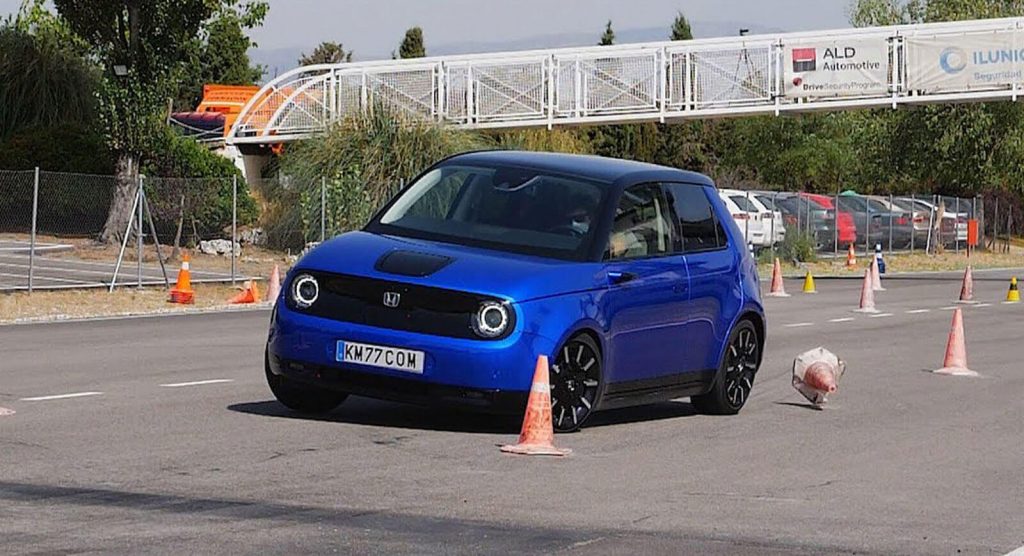In order the pass the moose test, a vehicle’s entry speed must be 77 km/h (47.8 mph) or higher, and recently, a lot of new cars have struggled to stay between the cones.
One of the latest rides to have been subjected to the test was the Honda e. The electric supermini was put through its paces in the range-topping variant, which has 152 HP (154 PS / 113 kW) and 232 lb-ft (315 Nm) of torque, can sprint to 62 mph (100 km/h) in 8.3 seconds and hits a top speed of 90 mph (145 km/h).
Watch Also: What Is It Like To Drive The 2020 Honda e Electric Supermini?
So, how did it do? According to Km77, the highest entry speed was 75 km/h (46.6 mph), so technically, it has failed the test, despite the low center of gravity provided by the positioning of the battery under the floor and the fact that it came with Michelin Pilot Sport 4 tires. The Spanish outlet claimed that a higher entrance speed was not possible and ended its evaluation with the slalom test, which the zero-emission subcompact hatchback tackled with no problems whatsoever.
The Honda e’s result is comparable to other, more powerful and upmarket cars, like the Audi A7 executive sedan, which is much bigger and heavier. It is also identical to the current mega hatch king, the 415 HP and 369 lb-ft (500 Nm) Mercedes-AMG A45 S, which passed the test at 75 km/h (46.6 mph) as well. Other rides that performed similarly were the 301 HP BMW M235i Gran Coupe, the regular Mercedes-Benz CLA and, surprisingly, the new generation Suzuki Jimny, to name but a few.



